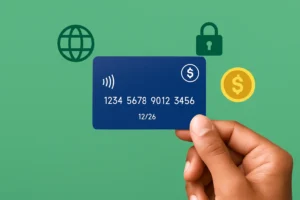The traditional invoicing process comes with frustration: stacks of paper, matching purchase orders, and manual invoice data entry, which gives enough room for errors and delays in the processing time. Delays in processing invoices can lead to delays in invoice payout, which thus strains relationships. In this blog post, you’ll learn how you can fix this with automated invoice processing.
We’ll explore the world of automated invoice processing, looking at how it works and how you can automate your invoice process for faster payment.

What is Automated Invoice Processing?
As the name implies, automated invoice processing is the automation and streamlining of the invoice processing workflow. The automation can cover the entire invoice processing workflow. It starts from the extraction of invoice data to invoice review and approval.
This process automatically pays invoices, which in turn reduces the accounts payable process. The account officers also relieved to focus on other strategic tasks. You don’t just save time and money with automated invoice processing; you also reduce errors and fraud.
One of the key features of an automated invoice system is that it provides standardized coding and automates approvals. There’s usually a dashboard as well that shows the status of invoices. Many invoicing software aid their payment by integrating with ERP platforms that help save time and increase accuracy.
How Does Automated Invoice Processing Work?
The automated invoice processing software automates every step involved in the traditional way of processing invoices. In the traditional way of invoice processing, an account officer receives an invoice, verifies the details of the description, and the payment detail is set up in their system and ready for approval and payment.
The automation of invoicing takes a smarter and quicker approach to the workflow above. The system directly receives the invoice sent by the supplier, immediately scans it, and then the details are sent as data to your accounting system. The next thing is that the data will be transformed into a searchable text document that can be mapped by the automated management system.This will enable the tracking of the data entered into the ERP system in real time.
The type of details saved in the data stored includes the company/supplier name, detailed description of the purchase, purchase amount, and the account of the invoice. The last thing is that the automated invoicing system sends the account of the payment to the concerned party, who reviews and endorses the payment. In cases where the system cannot automatically make the payment due to the possibility of error, it is held on for a human to review.
How To Automate Invoice Processing
The good news about automating your invoice processing is that it doesn’t require a complete revamp of your systems. The first thing you must do is select a suitable invoice automation software for your business. There’s a range of software available, from cloud-based solutions to enterprise resource planning (ERP) integrations. You must consider factors like your business size, the volume of the invoice you receive, and your budget when selecting a solution.
Once you’ve gotten your preferred software, integrate it with your existing accounting software. This will allow for a quick setup and transfer of the company’s data without having to manually input the data. You must also configure your software to match the unique workflow of your company. This might include restricting the automatic payment approval to a certain amount threshold.
After setting up the automation and configuring a unique workflow, you must now test it in a controlled environment. This means you’ll deploy the software locally to be used by selected people and get their feedback. The feedback you then use to make necessary changes and improvements.
The Automated invoice processing can then be integrated into your company’s general workflow. It receives the invoices from your vendors, uses machine learning in reading and extracting information, and makes approvals where necessary.
Which Invoice Processing Tasks Can You Automate?
The overall process of invoice automation is to streamline the entire invoice processing cycle, starting from the capturing of data to approval and even archiving. Some of the specific processes that this system automates in invoicing are:
Data Entry
Automated invoice processing can be enabled to accurately and quickly capture the details of an invoice using Optical Character Recognition(OCR). Information like the vendor information, invoice date, line items, and total amount.This cuts out the manual time spent on manual data entry.
Data validation
Automated invoice processing also helps in verifying the details of the invoice you received against some predefined rules or existing data in your accounting system. You’ll also be saving time here, and your account team only gets to manually review the ones that are flagged during the automation process.
Coding and Matching
You can also automatically assign specific codes to line items on an invoice to easily reference and even analyze the invoice. This will also simplify the tax payment to the authorities.
Your automated process can also use an algorithm to flag duplicate payments or bills for the same purchase.
Approval and Archiving
Another step you can automate is approval. You can set your automated invoice processing to approve the payment. Provided you have the required payment method option and it’s within your set jurisdiction. You can also set your approval to a certain amount, based on the size of your company.
Invoice automation systems can also help you archive invoices in a centralized and searchable location. This makes it easier to find an invoice, an easier alternative when compared to the traditional process.
You can tackle the repetitive, rule-based tasks of the invoice processing cycle and introduce errors using automation.
Conclusion
The traditional paper-based invoice process is a relic of the past, and by embracing automated invoice processing, you can unlock a lot of benefits for your business. Automated invoice processing allows the accounting department to achieve more, from streamlined workflows and reduced errors to faster approvals and happier vendors.
Take the first step towards a more efficient future by exploring invoice automation solutions today. Remember, an automated invoice process will lead to a happier accounting team, improved cash flow for the business, and a strategic advantage in today’s competitive landscape. So add a layer of machine learning to your workflow today!
Frequently Asked Questions
What is an automated invoice processing configuration?
Automated invoice processing configuration is the process of setting up a “paperless” invoice processing system that suits your company’s specific needs. This process usually involves utilizing various technologies and defining rules within the system to streamline the accounts payable (AP) workflow.
How do I create an automated invoice processing workflow?
To create an automated invoice processing workflow, you must analyze your current system to pinpoint time-consuming steps. This step could be data entry or even the manual way of monitoring who has paid and who hasn’t. You then consider the invoice processing software that can best address the problem that you want to fix. Next? Design your workflow by defining who approves invoices, either based on the amount sent or the vendor. The software will then handle the process automatically.
Ensure you test the workflow within a controlled environment before you fully deploy it for the public.
How do you automate bill payments?
Your customers can set up automatic billing in several ways. They can do this through the vendor’s website, through cloud-based accounting software, or their financial institution. You can learn more about billing automation and if you run a small business, you can read on how small businesses can automate payment systems.
What is invoice processing software?
Invoice processing software is a platform that is used to automatically handle manual invoice processes.The software is used by account departments to streamline and add more control and functionality to the invoice processes. Creating invoices using templates could be the solution for small firms but invoice automation makes it all easy and worthwhile. You can easily keep a record of your invoice on cloud-based structures. This will serve as a retrieval system when clients request an invoice.




